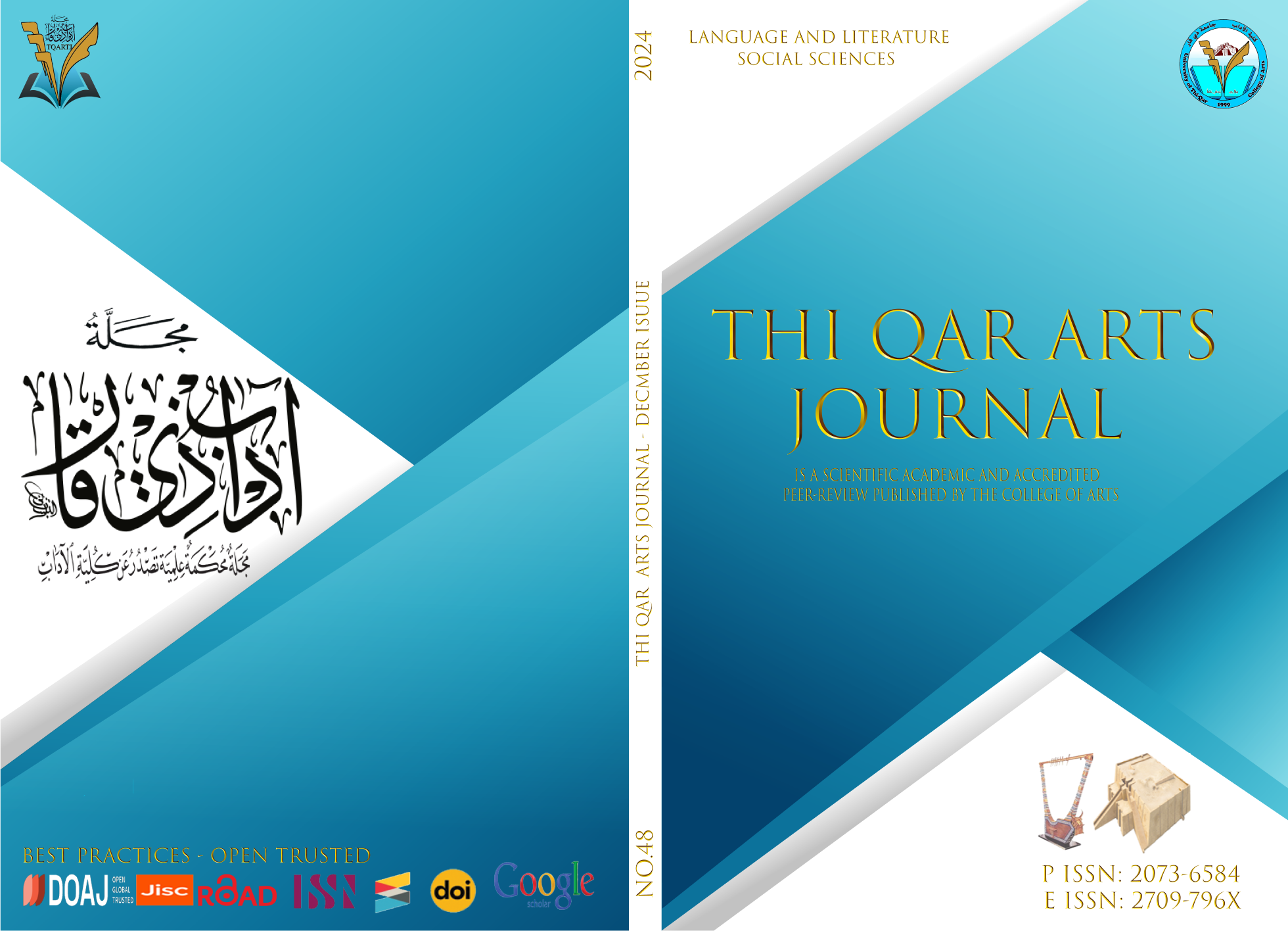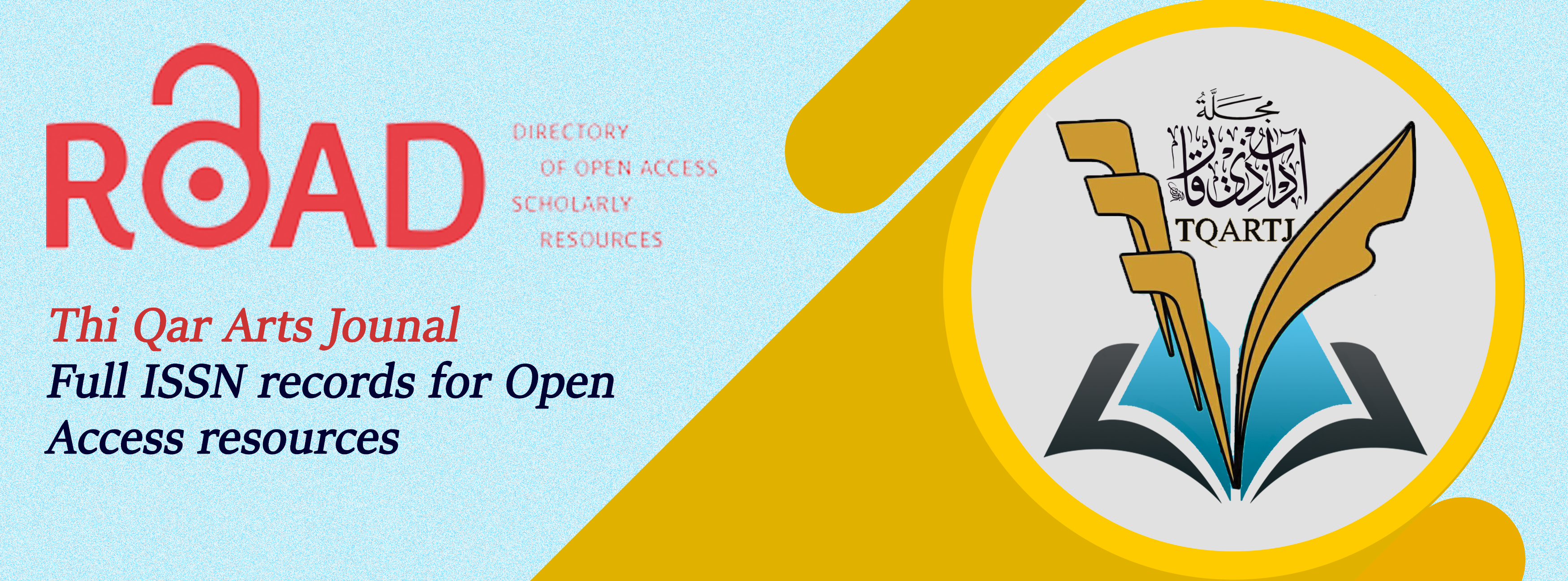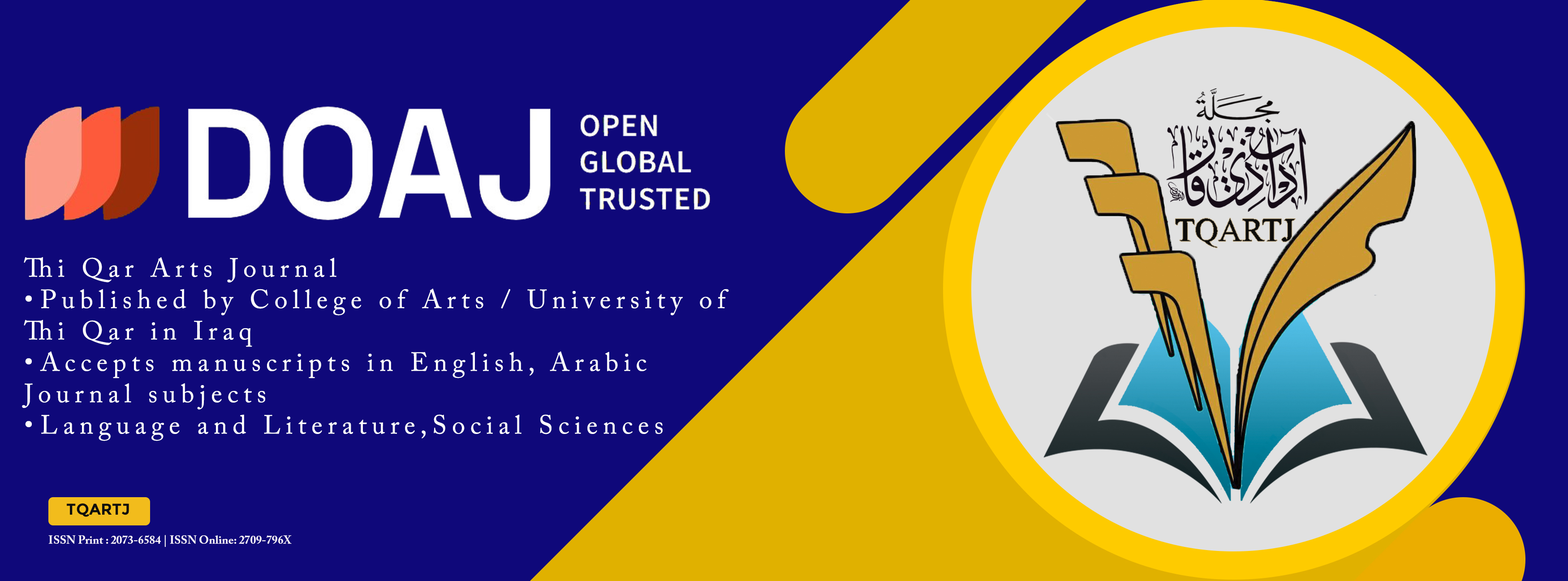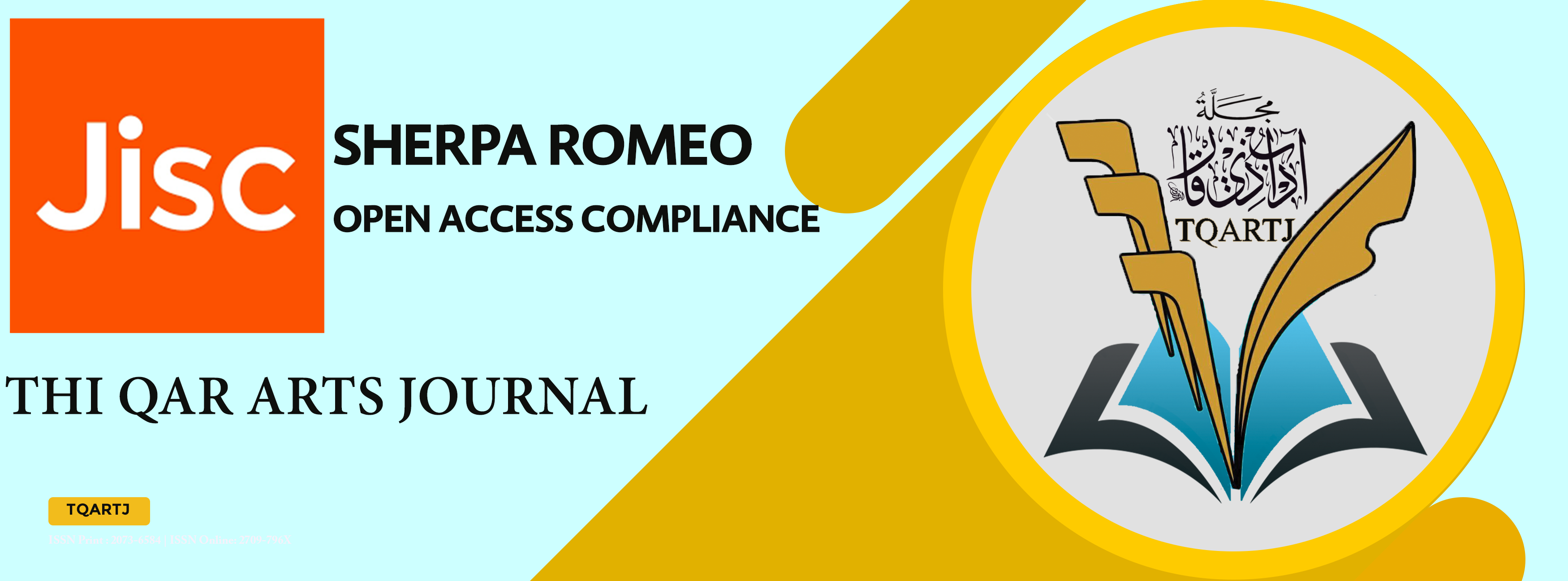The Art of Uncertainty: Unreliability and Ambiguity in Agatha Christie’s Mysteries Novels
DOI:
https://doi.org/10.32792/tqartj.v11i48.703Keywords:
Unreliability, ambiguity, Christie, detective, fictionAbstract
The current paper deals with unreliability and ambiguity in the style of novels by Agatha Christie. This paper sheds light on two important issues. Firstly, investigate the use of manipulating techniques in Agatha Christie’s novels. Secondly, please find out how Christie used an unreliable narrator as one of the common techniques of the mystery genre to manipulate the words and make sense of ambiguity in her detective novels. The paper has come out with certain concluding points. Firstly, unreliability is used in detective fiction to mislead readers by introducing them to unexpected story developments, such as the metamorphosis of apparently trusted or reliable individuals into unreliable ones. Secondly, Christie uses the unreliability of her unreliable narrator, who called Dr. Sheppard in her novel 'The Murder of Roger Ackroyd', to hide his identity as a killer, only revealing it at the end. Thirdly, in 'Sing a Song of Sixpence', Christie used certain modal verbs to hide the real killer and make the responsibility lie on the family members themselves, not the outsiders. We know that Christie manipulates the ideas and changes the facts by claiming that the ones who should be responsible for the murder are the house members. In sum, Agatha Christie’s style of novels is full of unreliability and ambiguity. She used to use such techniques to manipulate the readers’ minds, thoughts, and even feelings. The conclusions arrived at have validated the above hypothesis. This paper stated two hypotheses: The first is that an unreliable narrator can make a sense of ambiguity in detective novels. The second is that Christie used the unreliable narrator technique to manipulate readers and deceive them.
Downloads
References
Al-Mansoob, H. (2011). Analyzing the unreliable narrator: Repetition and subjectivity in Raymond Carver’s “What do you do in San Francisco?” Theory and Practice in Language Studies, 1(7), 802–810. https://doi.org/10.4304/tpls.1.7.802-810
Blažková, E. (2006). The portrait of English society in selected novels of Agatha Christie. Masaryk University Brno.
Brütsch, M. (2015). Irony, retroactivity, and ambiguity: three kinds of “Unreliable narration” in literature and film. In Unreliable Narration and Trustworthiness (pp. 221–244). De Gruyter eBooks. https://doi.org/10.1515/9783110408263.221
Burke, M., Gregoriou, C., & Bray, J. (Eds.). (2019). Rethinking language, text and context. Routledge.
Course Hero. (n.d.). The murder of Roger Ackroyd | study guide. Course Hero. https://www.coursehero.com/lit/The-Murder-of-Roger-Ackroyd/chapters-25-26-summary/
Cuddon, J. A., & Habib, M. a. R. (2013). The Penguin Dictionary of Literary Terms and Literary Theory: Fifth Edition (5th ed.). Blackwell Publishing.
Dhaouadi, M. (2022). “A maze of conflicting passions”: Gender play in Agatha Christie’s Hercule Poirot and Jane Marple. Faculty of Humanities and Social Sciences of Tunis.
Espeso, T. J. (2022). “Everything is simple if you arrange the facts methodically”: A narratological approach to Agatha Christie’s fictional mysteries. Universidad De Valladolid.
Gillon, B. S. (1990). Ambiguity, generality, and indeterminacy: Tests and definitions. Synthese (Dordrecht. Print), 85(3), 391–416. https://doi.org/10.1007/bf00484835
Häljestam, G. (2015). The unreliability of Dr. Sheppard and Humbert Humbert: a study of the unreliable narrators in Christie’s The Murder of Roger Ackroyd and Nabokov’s Lolita. Halmstad University.
Havlíčková, A. (2005). Agatha Christie and her great Detective (based on Poirot investigates and Hercule Poirot’s Christmas, reflecting 1920s and 1930s). Masaryk University Brno.
Matiychak, A. (2019). Narrative unreliability as a literary device and reception shift. Pitannâ Lìteraturoznavstva, 99(99), 135–150. https://doi.org/10.31861/pytlit2019.99.135
Nünning, Vera (2015). Unreliable Narration and Trustworthiness. Intermedial and Interdisciplinary Perspectives. Volume 44 in the series Narratologia, https://doi.org/10.1515/9783110408263
Osborne, C. (1999). The life and crimes of Agatha Christie. HarperCollins Publishers.
Page, R. E., Busse, B., & Nørgaard, N. (2020). Rethinking language, text and context: Interdisciplinary Research in Stylistics in Honour of Michael Toolan. Routledge.
Schaik, L. (2015). This paper is about murderous bunnies; unreliable narration, its use and function in the murder of Roger Ackroyd and the Little Stranger. Radboud University Nijmegen.
Storm, M. (2012). Agatha Christie’s ‘The Mysterious Affair at Styles’: A case study in Dutch and German translation cultures using corpus linguistic tools [Thesis]. University of Birmingham.
Voždová, M. (2020). The role of the narrator in the British detective novels of the Golden Age era. PALACKÝ UNIVERSITY.
Published
License
Copyright (c) 2024 Azhar Kadhim Sabr ,Dr. Ahmed Karyosh Jubair

This work is licensed under a Creative Commons Attribution 4.0 International License.
The journal applies the license of CC BY (a Creative Commons Attribution International license). This license allows authors to keep ownership of the copyright of their papers. But this license permits any user to download, print out, extract, reuse, archive, and distribute the article, so long as appropriate credit is given to the authors and the source of the work. The license ensures that the article will be available as widely as possible and that the article can be included in any scientific archive.



















